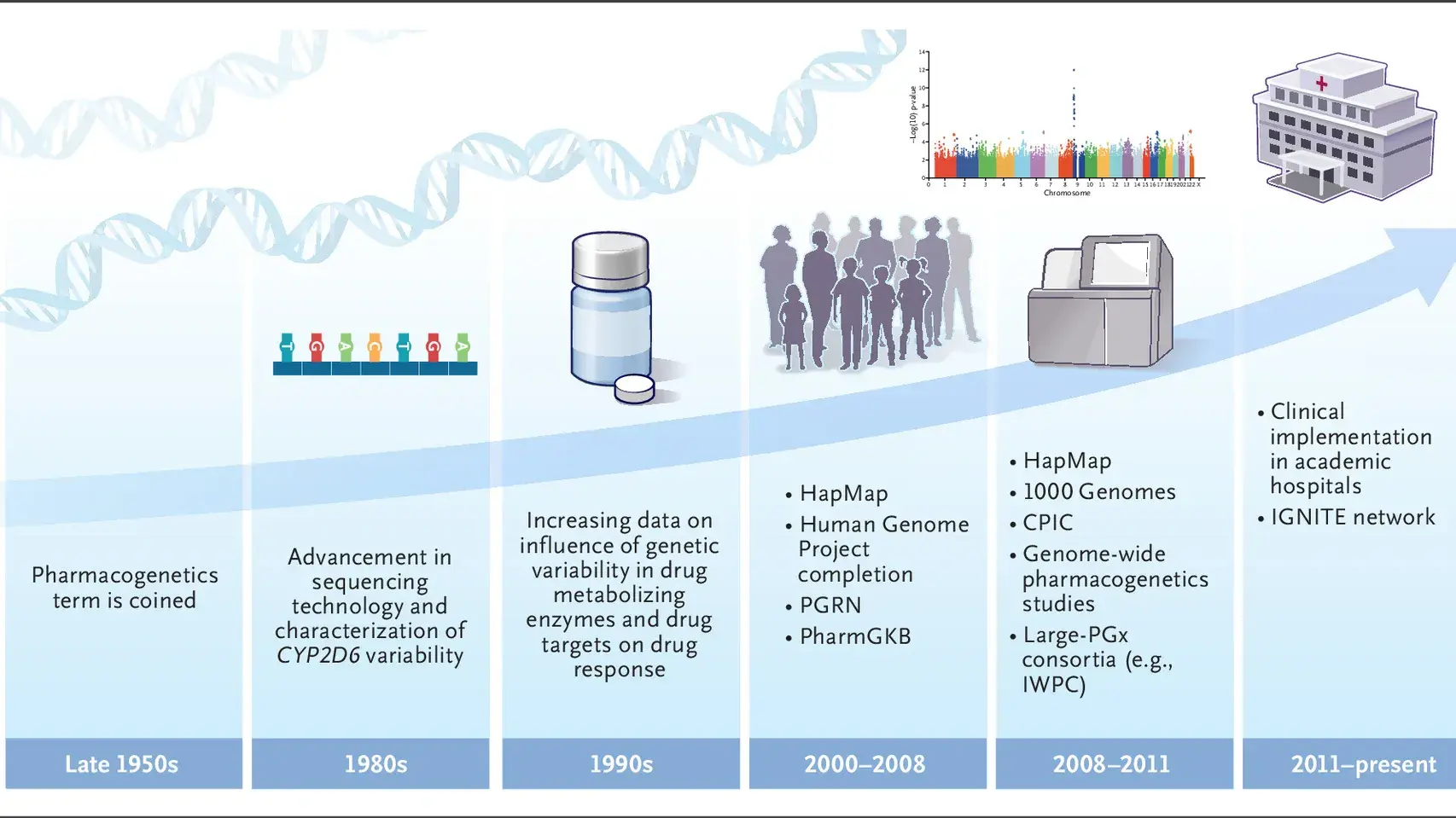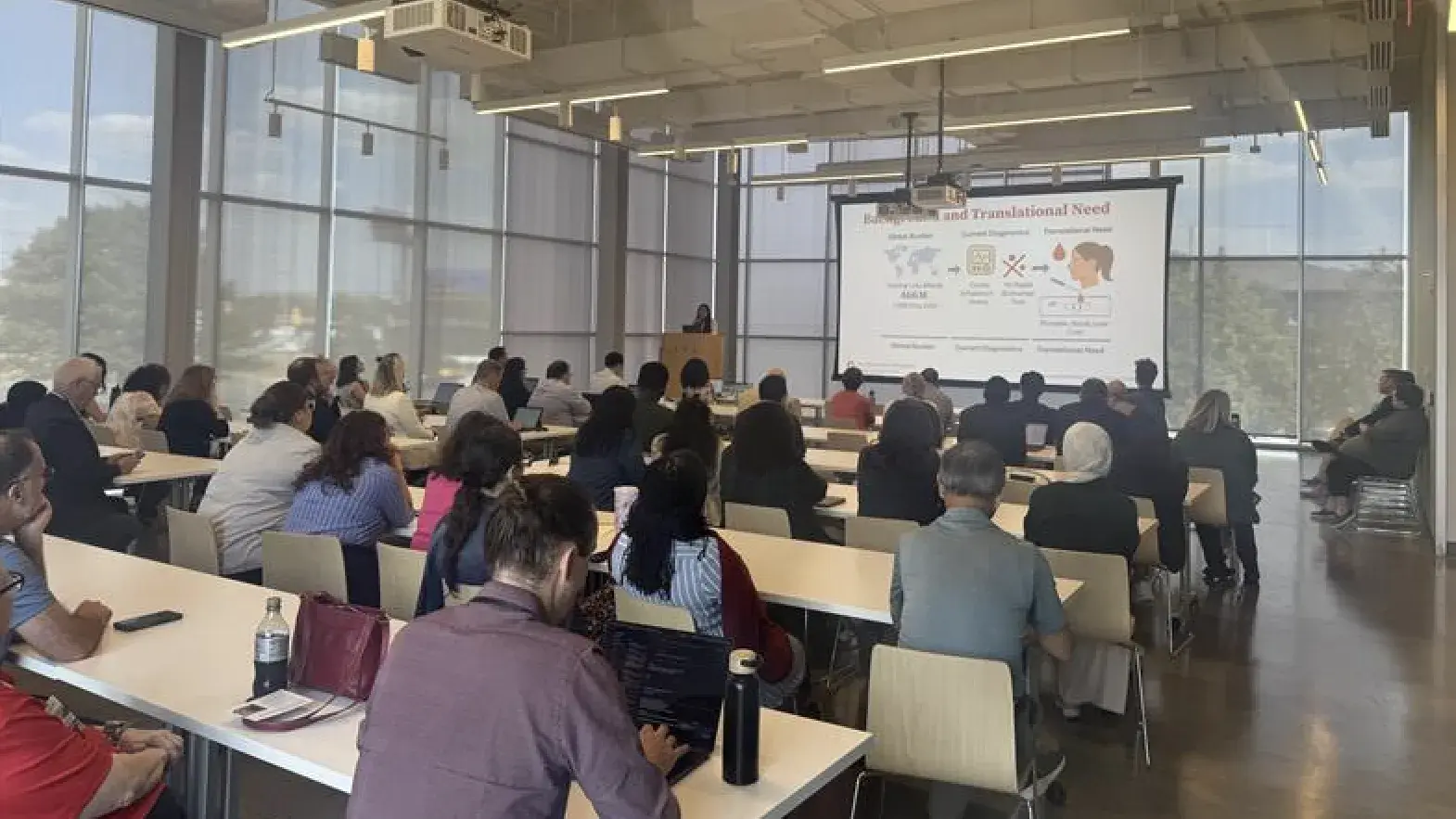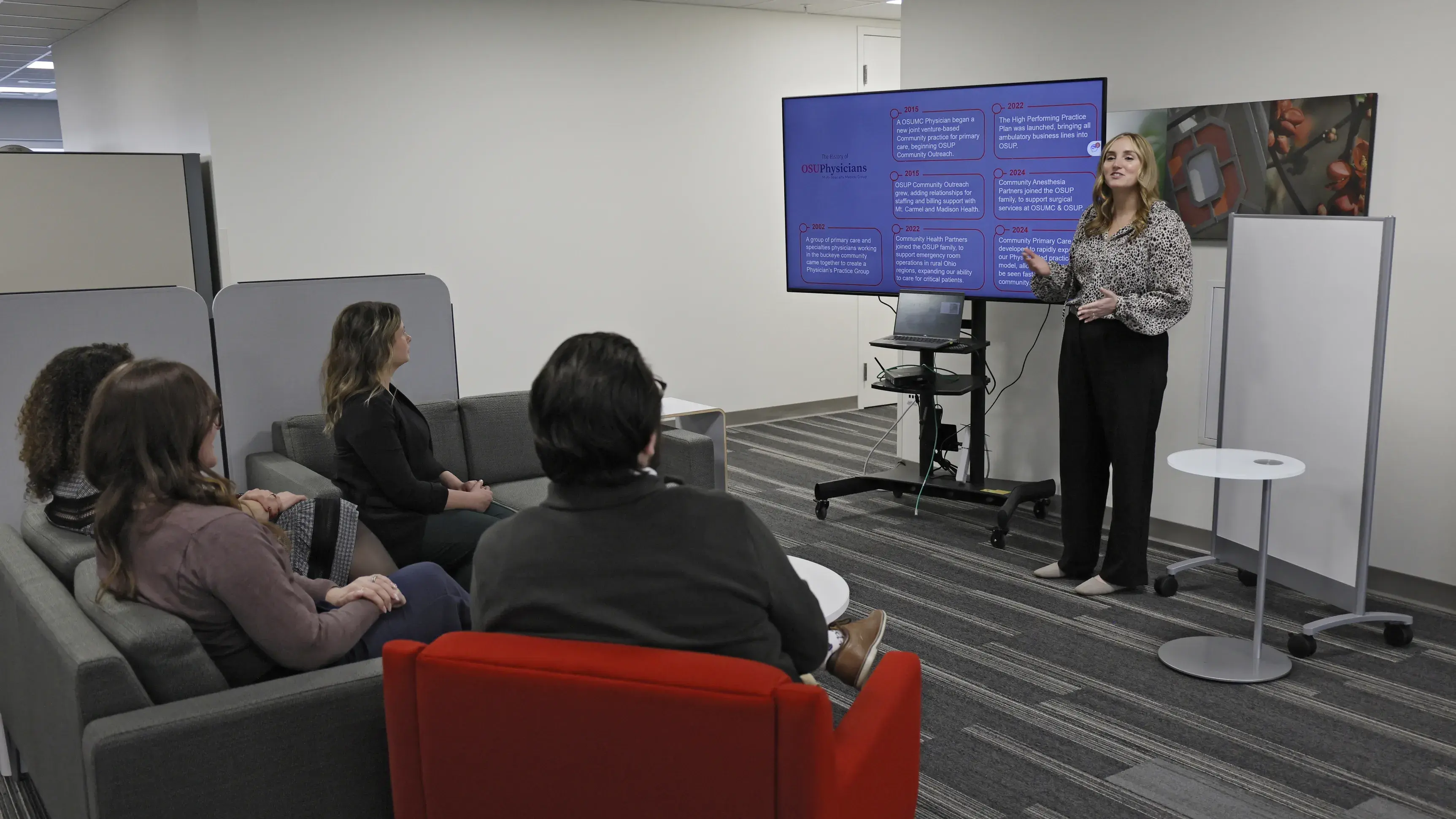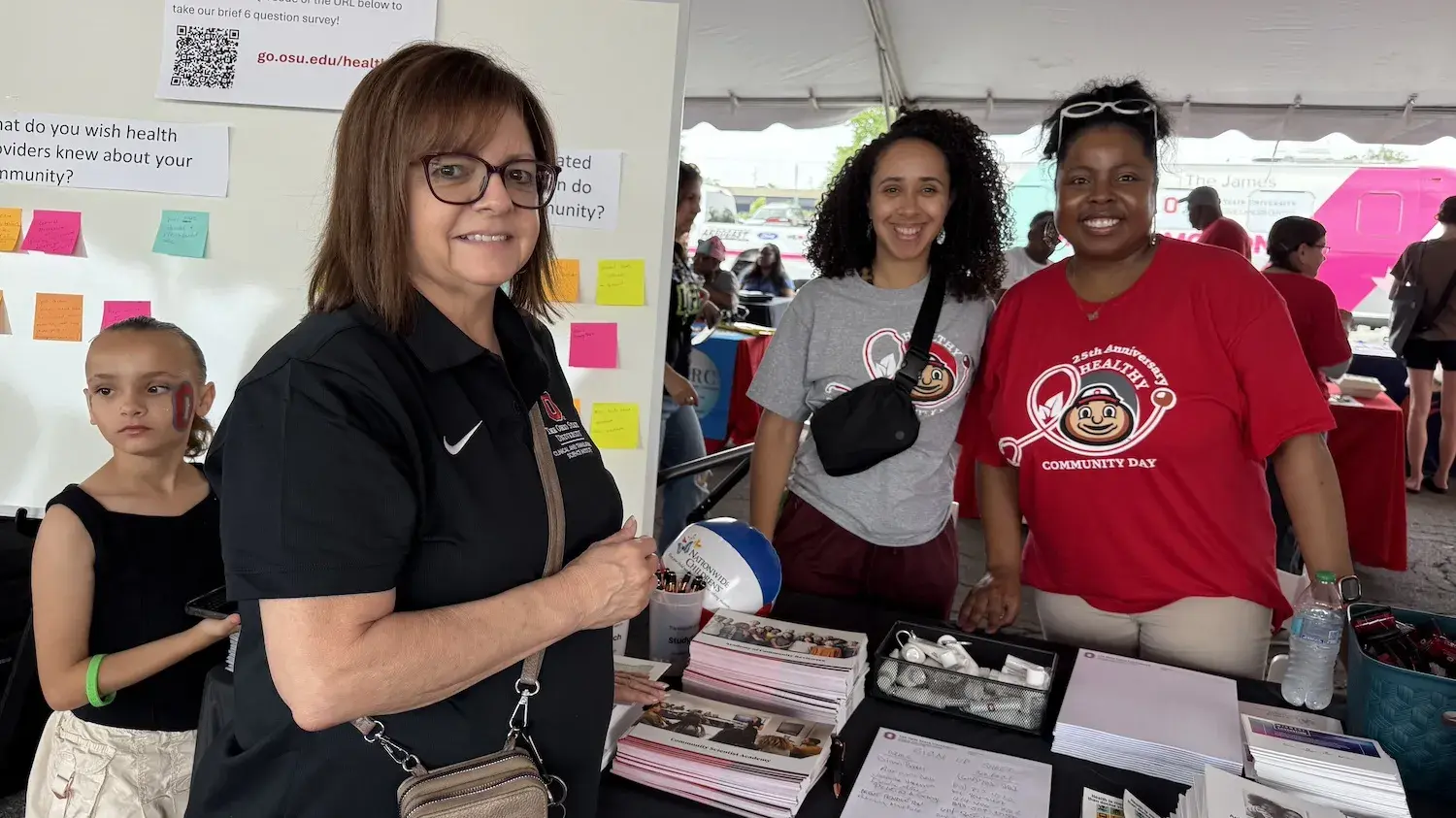News
News

Ohio CTSAs Collaborative Review Article Featured in NEJM Evidence
The recently published review article in NEJM Evidence highlights collaboration between two Ohio Clinical and Translational Science Award (CTSA) hubs. Co-authored by Julie A. Johnson, Pharm.D., director of The Ohio State University Clinical and Translational Science Institute and Ohio State’s CTSA PI, and Nihal El Rouby, Pharm.D., Ph.D., a KL2 Scholar at the University of Cincinnati’s Center for Clinical and Translational Science and Training, the review manuscript reflects the strength of statewide partnerships in advancing translational research. Their joint contribution highlights Ohio’s leadership in clinical and translational science and the impact of cross-institutional collaboration.

Ohio State Makes an Impact at REDCapCon 2025
The College of Medicine Research Information Technology (RIT) team proudly represented The Ohio State University at the annual international REDCapCon 2025, held this past September in Wisconsin. Under the exceptional leadership of Heather Lansky, Ohio State’s team showcased their technical excellence and earned prestigious recognition from the global REDCap community.

Jessica Fritter, DHSc, MACPR, ACRP-CP has been named the Clinical Research Professionals co-director of Workforce Development
The Ohio State University Clinical Translational Science Institute is pleased to announce Jessica Fritter, DHSc, MACPR, ACRP-CP has been named the Clinical Research Professionals co-director of Workforce Development.

CTSI Research Showcase
The CTSI hosted the 2025 CTSI Research Showcase on September 17, 2025, at the Energy Advancement and Innovation Center in The Ohio State University’s new Innovation District. The event showcased the innovation and collaboration of researchers supported by the CTSI's funding, training and grant-writing programs.

Joshua J. Joseph Appointed Deputy Director of CTSI
We are pleased to announce Joshua J. Joseph, MD, MPH, FAHA, ASCI, as the new deputy director of The Ohio State University Clinical and Translational Science Institute (CTSI). In this role, Dr. Joseph will partner with CTSI leadership to drive strategic initiatives and deepen partnerships with state and local government, further strengthening the CTSI’s commitment to impactful, community-oriented research.

Improving Pain Management with Genetic Testing
A new study is providing insights into why some patients experience inadequate relief from commonly used pain medications. Led by Julie Johnson, PharmD, CTSI director and PI and professor of Internal Medicine, and Noor Nahid, PhD, a postdoctoral associate of Biomedical Informatics, researchers found that screening patients for a certain enzyme could help physicians select the most appropriate medication and improve clinical outcomes.

Ohio State CTSI Community Engagement HUB Spotlight
The Ohio State University Clinical and Translational Science Institute views the communities it serves as essential partners in the clinical and translational research process. Through participatory programs and state-wide partnerships, the Ohio State CTSA hub is transforming how communities engage, contribute and benefit from research and scientific discovery.

CTSI Community Engagement Team Connects with Community Members at Healthy Community Day
On Saturday, June 7, the CTSI Community Engagement team joined neighbors, families and health professionals at the 25th annual Healthy Community Day, hosted by The Ohio State University Wexner Medical Center at Outpatient Care East in Columbus, Ohio.
